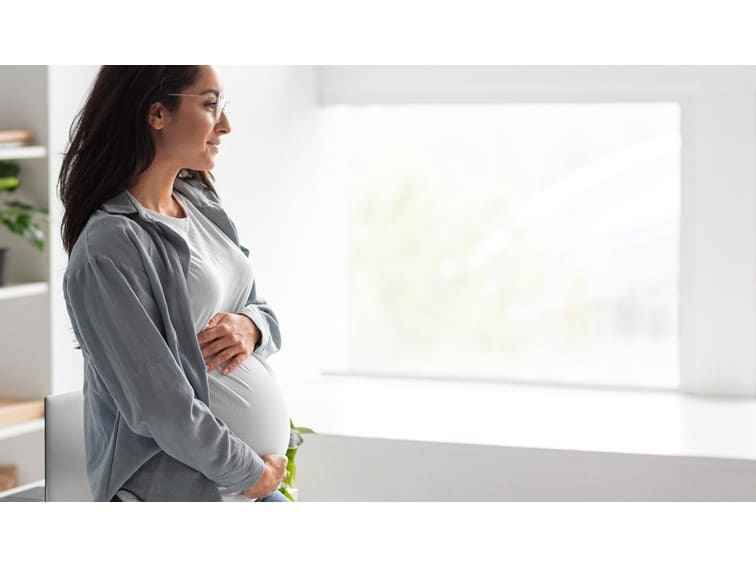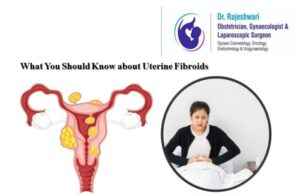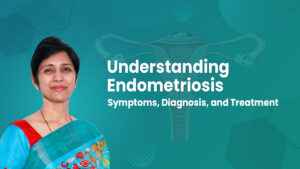Preeclampsia in Pregnancy – Causes, Symptoms
High blood pressure with loss of proteins in urine during pregnancy is termed Preeclampsia. The condition usually begins after 20 weeks of pregnancy in women whose blood pressure had been normal. Preeclampsia can lead to severe complications during pregnancy and pose a threat to the life of the mother and baby if left untreated.
What are the Symptoms Associated with Preeclampsia in pregnancy?
Abnormal blood pressure (a rise in blood pressure) during pregnancy is the major first warning sign. It should therefore be monitored regularly. High blood pressure may develop gradually or rise suddenly. The other signs and symptoms may include nausea or vomiting, upper abdominal pain, light sensitivity, changes in vision, blurred vision, severe headaches, excessive protein in the urine (proteinuria), impaired liver function, low platelets count; decreased urine output, and shortness of breath (due to accumulation of fluid in the lungs).
Causes of Preeclampsia in Pregnancy
There are several factors involved in the development of this condition. In the early stage of pregnancy, new blood vessels develop and efficiently evolve to supply blood to the placenta. When they don’t develop and function properly, preeclampsia may develop. The amount of blood flowing through these blood vessels gets restricted due to hormonal signaling and the narrowing of blood vessels. When this happens, the fetus receives inadequate blood and the blood vessels may get damaged.
What are the Risk Factors for Preeclampsia?
Age: The risk is equally high for both young pregnant women and pregnant women aged above 35 years.
Obesity: The risk is higher in obese women.
First Pregnancy: For the first to be mothers, the risk of preeclampsia is higher.
Chronic Hypertension: If a woman already has chronic hypertension, the risk of developing preeclampsia increases.
Family History: The risk increases significantly with a family history of hypertension.
Personal history of certain conditions: A woman with a personal history of diabetes, high blood pressure, kidney and heart disease, migraines, lupus, and blood clotting propensity is at increased risk of developing preeclampsia.
Less time interval between pregnancies: Women who have babies in less than two years gap or after 10 years apart may be at a higher risk of preeclampsia.
Multiple Pregnancy: The risk increases with multiple pregnancy – twins, triplets, or other multiples.
Complications
The earlier it occurs in the pregnancy the more severe it becomes. Preeclampsia causes huge risks for your baby and you. The condition may necessitate induced labor and delivery.
Complications associated with preeclampsia include:
Preterm birth: It happens if the risk to the baby and the mother is high. Preterm birth can lead to breathing and other issues for the baby.
Fetal growth restriction: Restricted blood to the fetus through the placenta lead to an inadequate supply of oxygen, nutrients, and blood to the baby. When this happens, the growth of the fetus slows down. This may lead to preterm birth and low birth weight baby.
Placental Abruption: In this condition, the placenta separates from the inner wall of the uterus before delivery. Preeclampsia increases the risk of this condition leading to heavy bleeding – which is life-threatening for you and your baby.
Eclampsia: Uncontrolled preeclampsia may lead to eclampsia. It is a condition in which preeclampsia and seizures develop together. There are no symptoms to predict this condition. Therefore, it becomes dangerous for both the mom and the baby. When this condition develops, delivery becomes imminent regardless of how far the period of pregnancy has reached.
HELLP Syndrome: It is an extremely dangerous condition and a severe form of preeclampsia. HELLP – Hemolysis, Elevated liver enzymes, and low platelet count. This condition can develop abruptly even before the detection of high blood pressure and without any warning signs. HELLP syndrome can cause damage to several organs of the body. The symptoms if present may include headache, nausea, vomiting, and upper right abdominal pain. When this condition develops rapidly, it can become life-threatening for the mother and baby.
Organ Damage: Preeclampsia is a very dangerous condition as it may result in damage to the heart, liver, kidneys, lungs, and eyes. In some cases, severe brain injury and stroke may also result. However, the extent of the damage may depend on the severity of preeclampsia.
When to see a gynaecologist?
You must pay attention to your scheduled appointments and visits with your obstetrician and gynaecologist. Your doctor will monitor your blood pressure. If you experience severe and sudden abdominal pain, shortness of breath, blurred or visual disturbances, or severe headaches, you must immediately seek emergency medical care and meet your gynaecologist.
Though headaches, nausea, vomiting, and body pains are common pregnancy-related complaints, it is difficult to know which symptoms are the new ones. Therefore, if it is your first pregnancy and your symptoms seem to be abnormal or indicating a serious health issue, then it is better to contact your doctor immediately.
If you have any concerns about preeclampsia in pregnancy, meet me personally.




